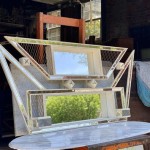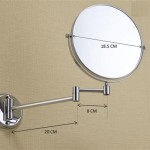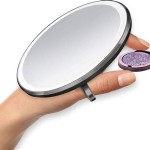How To Screen Mirror iPhone Onto LG TV
Screen mirroring enables the display of content from an iPhone onto a larger screen, such as an LG TV. This process allows users to share photos, videos, presentations, web pages, and other applications directly from their mobile device to the television. Several methods exist for establishing this connection, utilizing both wired and wireless technologies. Understanding the compatibility and functionalities of each method is crucial for successful screen mirroring.
The following details the various methods for screen mirroring an iPhone onto an LG TV, including the necessary equipment, setup procedures, and troubleshooting tips.
Utilizing AirPlay for Wireless Screen Mirroring
AirPlay, developed by Apple, is a proprietary wireless protocol that enables seamless audio and video streaming between Apple devices and compatible receivers. LG TVs manufactured from 2018 onwards generally support AirPlay 2, making it a straightforward method for screen mirroring from an iPhone. The primary requirement is that both the iPhone and the LG TV are connected to the same Wi-Fi network.
To initiate screen mirroring using AirPlay, begin by ensuring that both the iPhone and the LG TV are powered on and connected to the same Wi-Fi network. On the iPhone, swipe down from the top-right corner (or up from the bottom of the screen on older models) to access the Control Center. Locate and tap the "Screen Mirroring" button. A list of available AirPlay-compatible devices on the network will appear. Select the LG TV from the list.
Upon selecting the LG TV, a passcode may appear on the TV screen. Enter this passcode on the iPhone to authenticate the connection. Once the connection is established, the iPhone's screen will be mirrored onto the LG TV. The orientation of the iPhone screen (portrait or landscape) will be reflected on the TV. To stop screen mirroring, return to the Control Center, tap the "Screen Mirroring" button, and select "Stop Mirroring."
AirPlay offers a convenient and reliable method for screen mirroring, but its performance can be affected by the strength and stability of the Wi-Fi network. Interference from other wireless devices or network congestion can lead to lag or dropped connections. To mitigate these issues, ensure that the Wi-Fi router is positioned in a central location and that the network is not overloaded with too many connected devices. Consider using a 5 GHz Wi-Fi network, which generally offers better performance than the 2.4 GHz band, especially in environments with high wireless traffic.
AirPlay also allows for streaming specific content, such as videos from apps like YouTube or Netflix, without mirroring the entire screen. Within these apps, look for the AirPlay icon (a rectangle with a triangle at the bottom). Tapping this icon allows you to select the LG TV as the playback destination. This approach is more efficient than screen mirroring, as it only streams the video content and conserves battery life on the iPhone.
If the LG TV does not appear in the list of available AirPlay devices, verify that AirPlay is enabled in the TV's settings. Navigate to the TV's settings menu, usually accessible through the remote control, and look for the AirPlay or Apple AirPlay settings. Ensure that AirPlay is turned on and that any restrictions on device access are removed. It may also be necessary to update the TV's firmware to the latest version to ensure compatibility with the latest version of AirPlay.
In some cases, restarting both the iPhone and the LG TV can resolve connectivity issues. Power cycle both devices by turning them off, waiting a few seconds, and then turning them back on. This can clear any temporary glitches or errors that may be preventing the AirPlay connection from establishing.
Using a Wired Connection with an HDMI Adapter
An alternative to wireless screen mirroring is using a wired connection via an HDMI adapter. This method offers a more stable and reliable connection, especially in environments with unreliable Wi-Fi. To use this method, an Apple Lightning Digital AV Adapter (for iPhones with a Lightning port) or a USB-C Digital AV Multiport Adapter (for iPhones with a USB-C port) is required, along with an HDMI cable.
To set up the wired connection, plug the HDMI cable into the HDMI port on the LG TV. Connect the other end of the HDMI cable to the HDMI port on the Apple adapter. Then, plug the Lightning or USB-C connector on the adapter into the corresponding port on the iPhone. Power on the LG TV and select the correct HDMI input channel using the TV's remote control.
Once the connection is established, the iPhone's screen should automatically appear on the LG TV. The wired connection provides a direct and stable link between the two devices, minimizing the risk of lag or dropped connections. This method is particularly useful for activities that require high bandwidth and low latency, such as gaming or streaming high-resolution video content.
The HDMI adapter also typically includes a Lightning or USB-C port for charging the iPhone while it is connected to the TV. This is beneficial for longer screen mirroring sessions, as it prevents the iPhone's battery from draining quickly. Simply connect a Lightning or USB-C charging cable to the adapter and plug it into a power source.
If the iPhone's screen does not appear on the LG TV after connecting the adapter, verify that the HDMI cable is securely connected to both the TV and the adapter. Also, ensure that the correct HDMI input channel is selected on the TV. Try using a different HDMI cable or a different HDMI port on the TV to rule out any issues with the cable or the port.
In some cases, the HDMI adapter may require a software update to ensure compatibility with the iPhone. Check the adapter manufacturer's website for any available updates and follow the instructions to install them. Restarting the iPhone and the LG TV after updating the adapter's software may also be necessary.
While the wired connection offers a more reliable connection than AirPlay, it is less convenient due to the need for cables and an adapter. The mobility of the iPhone is also restricted by the length of the HDMI cable. However, for situations where a stable and high-quality connection is paramount, the wired method is a viable option.
Third-Party Apps for Screen Mirroring
In addition to AirPlay and HDMI adapters, several third-party apps offer screen mirroring capabilities for iPhones and LG TVs. These apps typically work by connecting to the LG TV over Wi-Fi and mirroring the iPhone's screen using a proprietary protocol. While these apps can provide a convenient alternative to AirPlay, their performance and reliability can vary significantly.
Popular screen mirroring apps for iPhone and LG TV include "AirBeamTV," "Replica," and "Screen Mirroring App." These apps are generally available for download from the App Store. Before installing a screen mirroring app, it is important to read reviews and check the app's compatibility with both the iPhone and the LG TV.
To use a screen mirroring app, download and install the app on the iPhone. Then, download and install the corresponding receiver app on the LG TV, if required. The receiver app may be available from the LG Content Store. Launch both apps and follow the on-screen instructions to connect the iPhone to the LG TV.
The process of connecting the iPhone to the LG TV using a screen mirroring app typically involves selecting the LG TV from a list of available devices and entering a passcode or PIN to authenticate the connection. Once the connection is established, the iPhone's screen will be mirrored onto the LG TV.
The performance of screen mirroring apps can be affected by the strength and stability of the Wi-Fi network, as well as the processing power of both the iPhone and the LG TV. Lag, dropped connections, and image quality issues may occur, especially in environments with high wireless traffic or limited processing resources.
Some screen mirroring apps may also require a subscription or a one-time purchase to unlock certain features or remove ads. Before purchasing a screen mirroring app, it is advisable to try the free version to ensure that it meets the user's needs and expectations.
It is also important to be aware of the security implications of using third-party screen mirroring apps. These apps may require access to sensitive information on the iPhone, such as photos, videos, and contacts. It is crucial to choose a reputable app from a trusted developer and to carefully review the app's privacy policy before granting it access to personal data.
While third-party screen mirroring apps can offer a convenient alternative to AirPlay and HDMI adapters, their performance, reliability, and security can vary. Users should carefully evaluate the pros and cons of each app before making a decision.
Ultimately, selecting the appropriate method for screen mirroring an iPhone onto an LG TV depends on individual needs and preferences. AirPlay offers a convenient and seamless wireless experience for users with compatible devices and a reliable Wi-Fi network. A wired connection with an HDMI adapter provides a more stable and reliable connection for activities that require high bandwidth and low latency. Third-party apps can offer a convenient alternative to AirPlay, but their performance, reliability, and security can vary.

Solved How To Mirror Iphone Lg Tv 2024
Lg Tv How To Use The Screen Share On A Usa Support

Use Airplay Mirroring On Lg Tv With Iphone Without Apple Here S How Redmond Pie
Lg Tv How To Use The Screen Share On A Usa Support
:max_bytes(150000):strip_icc()/lg-screen-share-menu-yellow-819f174e11fa46eb9ab39a80d20a6872.jpg?strip=all)
How To Do Screen Mirroring On Lg Smart Tvs

How To Mirror Your Iphone Lg Tv Osxdaily

How To Mirror A Screen An Lg Tv

How To Mirror A Screen An Lg Tv

Free Full Guide On How To Mirror Iphone Lg Tv Airdroid

How To Mirror Your Iphone Lg Tv Osxdaily








